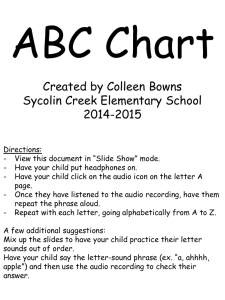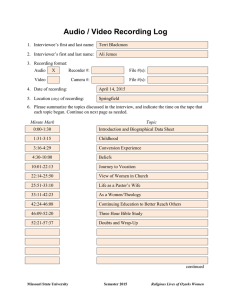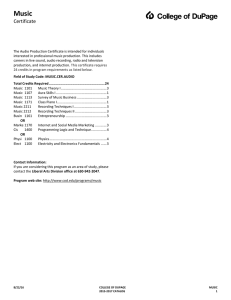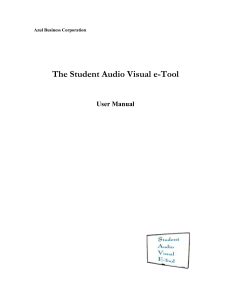1 Phase II Technical Objectives and work plan
advertisement
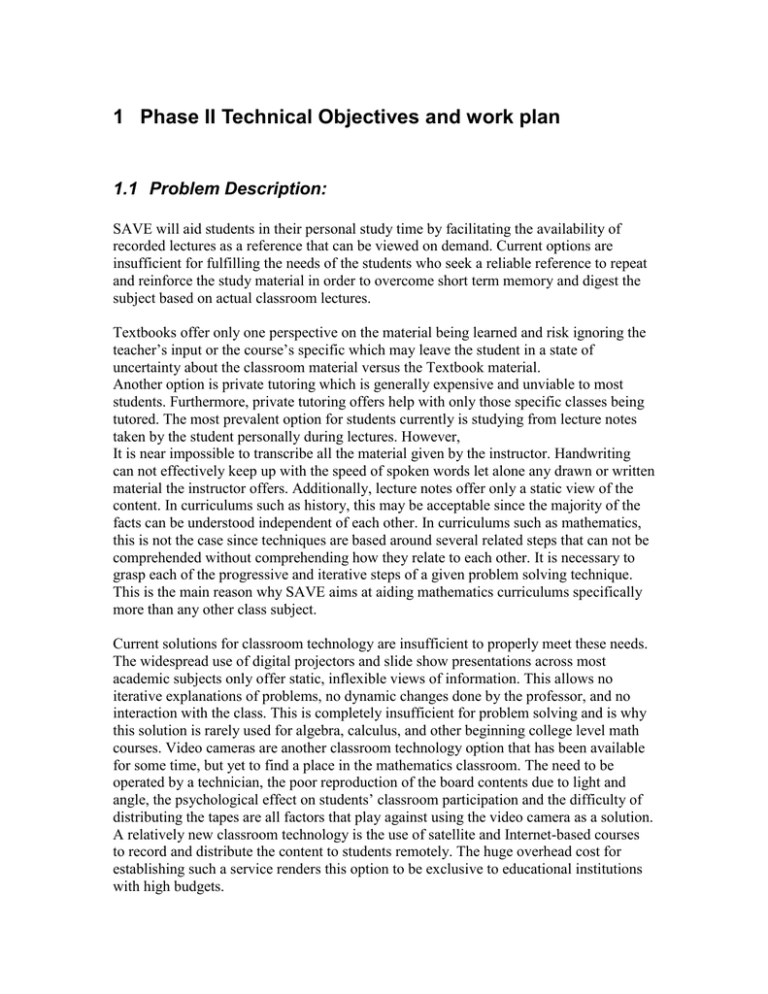
1 Phase II Technical Objectives and work plan 1.1 Problem Description: SAVE will aid students in their personal study time by facilitating the availability of recorded lectures as a reference that can be viewed on demand. Current options are insufficient for fulfilling the needs of the students who seek a reliable reference to repeat and reinforce the study material in order to overcome short term memory and digest the subject based on actual classroom lectures. Textbooks offer only one perspective on the material being learned and risk ignoring the teacher’s input or the course’s specific which may leave the student in a state of uncertainty about the classroom material versus the Textbook material. Another option is private tutoring which is generally expensive and unviable to most students. Furthermore, private tutoring offers help with only those specific classes being tutored. The most prevalent option for students currently is studying from lecture notes taken by the student personally during lectures. However, It is near impossible to transcribe all the material given by the instructor. Handwriting can not effectively keep up with the speed of spoken words let alone any drawn or written material the instructor offers. Additionally, lecture notes offer only a static view of the content. In curriculums such as history, this may be acceptable since the majority of the facts can be understood independent of each other. In curriculums such as mathematics, this is not the case since techniques are based around several related steps that can not be comprehended without comprehending how they relate to each other. It is necessary to grasp each of the progressive and iterative steps of a given problem solving technique. This is the main reason why SAVE aims at aiding mathematics curriculums specifically more than any other class subject. Current solutions for classroom technology are insufficient to properly meet these needs. The widespread use of digital projectors and slide show presentations across most academic subjects only offer static, inflexible views of information. This allows no iterative explanations of problems, no dynamic changes done by the professor, and no interaction with the class. This is completely insufficient for problem solving and is why this solution is rarely used for algebra, calculus, and other beginning college level math courses. Video cameras are another classroom technology option that has been available for some time, but yet to find a place in the mathematics classroom. The need to be operated by a technician, the poor reproduction of the board contents due to light and angle, the psychological effect on students’ classroom participation and the difficulty of distributing the tapes are all factors that play against using the video camera as a solution. A relatively new classroom technology is the use of satellite and Internet-based courses to record and distribute the content to students remotely. The huge overhead cost for establishing such a service renders this option to be exclusive to educational institutions with high budgets. 1.2 Solution Description: We choose to solve this problem by recording the professor’s narrative lecture using a wireless microphone and the professor’s written notation using a digital pressure sensitive whiteboard. This content will then be synchronized together, stored in an efficient format, and distributed via the internet to students for playback on their own computer of use. We term this solution Student Audio/Visual E-tool or SAVE. Vector-based recording will allow us to have a high quality graphical reproduction and also be able to store the graphical data in a format that will be one hundredth to one fifth the size of other graphical storage formats. Synchronization is integral to being able to replicate the presentation in a coherent format on the students’ own home computer. Drawn gestures are a very significant innovation and will allow the teacher to send commands and instructions to the recording software for purposes of content control and authoring without interrupting the flow of their instruction. Developing gesture recognition technology will allow us to seamlessly integrate this with our product. Storing all this data in an appropriate format is necessary to be able to distribute this file over the internet to the students for their own personal study time. SAVE will be composed of COTS hardware elements and newly written software. The system will allow the complete recording of any classroom lecture, including both Audio and Video. The major functional components of SAVE are: a. b. c. d. e. f. Classroom computer. Digital whiteboard Wireless microphone Student computer The Internet SAVE’s software The digital whiteboard will be connected to the classroom PC and all written contents on the board will be captured and converted into vector based graphics. The wireless microphone will capture the instructor’s speech and SAVE will synchronize audio and video to produce a single output file. The file can then be distributed to students via the Internet as a download. 1.3 Research goals: A prototype SAVE has been built to demonstrate basic functionality and to allow an assessment of performance to reveal any design or construction shortcomings. Based on our prototype testing, the system as originally designed and intended is viable and the majority of the planned features are possible. The prototype demonstrated successful capture and conversion of drawn images into digital vector format, audio capture, audio/video synchronization, file saving and playback. Future research goals will include implementation of other features which include gesture control and audio compression. Marketing will be a significant research goal on the agenda. As the project evolves into a product, marketing will become one of the most important tasks, covering customer research, market analysis and competition assessment. 1.4 Work plan The milestones for Phase II include documentation, product development, marketing, acquiring funding and website implementation. Task Duration Start Finish SAVE phase II 730 days Fri 6/10/05 Sun 6/10/07 Documentation 130 Fri 6/10/05 Tue 10/18/05 SAVE Development 330 Wed 10/19/05 Thu 9/14/06 Marketing 150 Fri 9/15/06 Mon 2/12/07 Funding 100 Tue 2/13/07 Thu 5/24/07 Website 20 Fri 5/25/07 Thu 6/14/07 Note: Weekends were considered as workdays. Actual dates may change once weekends were factored in.


